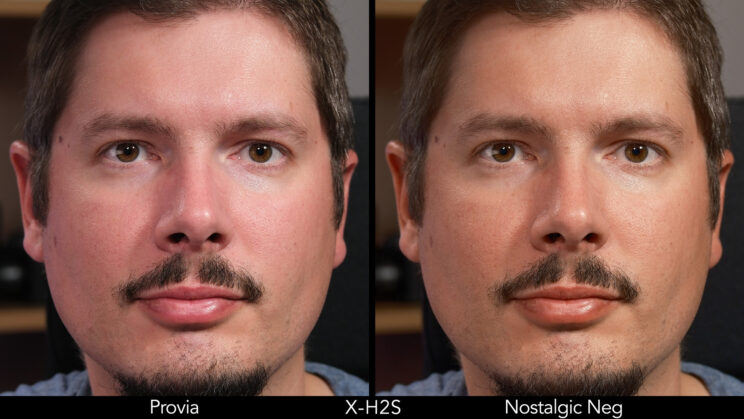When a new Fujifilm camera comes on the scene, it tends to grab the attention of an enthusiastic audience, particularly when it’s an X-T model. The X-T5 arrives with great fanfare in its fifth recital. Compared to the Fujifilm X-T4, users can expect a host of improvements in almost all areas of the camera.
In this guide, we’ll take you through the ten main differences that you’re bound to compare when looking at the Fujifilm X-T4 and Fujifilm X-T5. From the sensor, body, autofocus and beyond, read about what’s new and find out which camera is right for you.
Before we dive into the comparison, for those looking for the TLDR summary of the improvements, here is a quick list:
- 40.2MP BSI X-TRANS CMOS 5HR Sensor
- X Processor 5
- Improved Subject Detect AF with Eye Tracking
- 160MP Pixel Shift For Super High-Resolution Imaging
- 7 Stops IBIS For Improved Stability and Clarity
- 1/180,000 Second Shutter Speed
- 6.2K 30p, 4K 60p Movie Recording
- 4:2:2 10-Bit Internal Recording
- 3-Way Tilting LCD Touchscreen
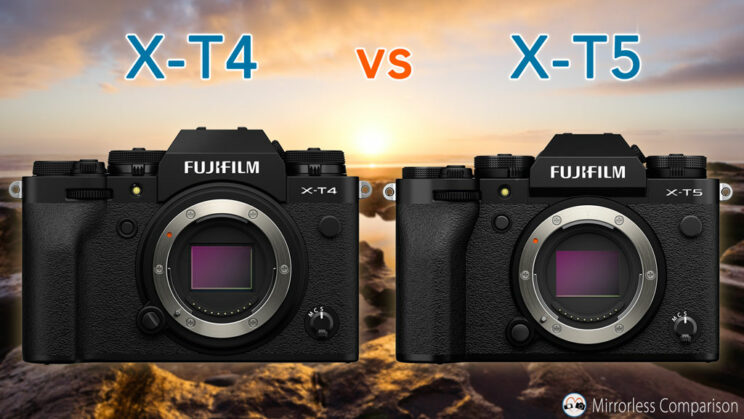
Ethics statement: the following is based on our personal experience with the X-T4, and official specs for the X-T5. The article was co-written with Leigh Diprose. We were not asked to write anything about this product, nor were we provided any compensation of any kind. Within the article, there are affiliate links. If you buy something after clicking one of these links, we will receive a small commission. To know more about our ethics, you can visit our full disclosure page. Thank you!
1. Sensor Design
The Fujifilm X-T5 is a high-end mirrorless camera with a new BSI X-Trans CMOS Sensor. The sensor design on the new camera has been completely revamped from previous models. The main difference is the increase in megapixel count from 26.1MP on the X-T4 to 40.2MP on the X-T5 (the same as the X-H2).
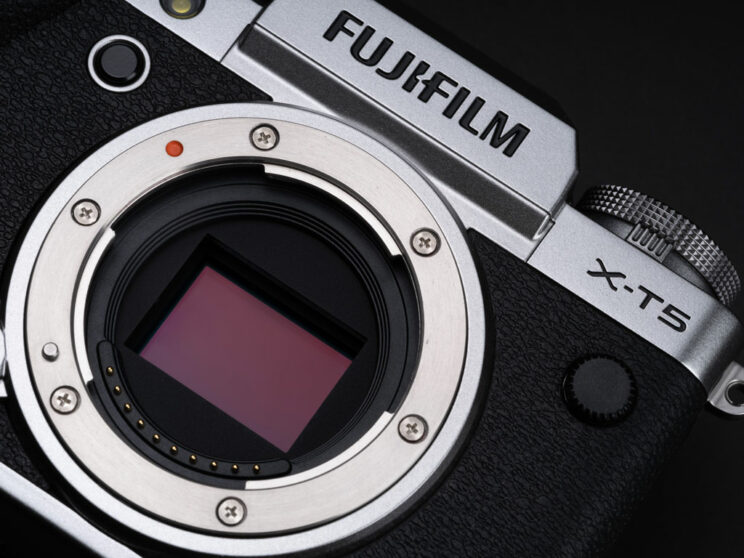
The new camera also sports the X-Processor 5, which is twice as fast as the one found in the X-T4.
The new X-Trans CMOS 5 HR sensor can take in more light thanks to its improved pixel structure. ISO 125, which was an extended level of sensitivity on the previous model, has now become available as a standard option.
Camera
Normal range
Extended range
X-T4
160 – 12,800
80 – 51,200
X-T5
125 – 12,800
64 – 51,200
The new sensor allows the exposure time to be controlled with higher precision, allowing users greater shutter speeds. Engage the electronic shutter, and the X-T5 unlocks a stunning 1/180,000 second shutter speed, which is ideal when pairing with an f/1 or f/1.2 lens outdoor. For reference, the X-T4 goes up to 1/32,000s.
Additionally, the X-T5 can save photographs in the recent HEIF format, in addition to JPEG and RAW. HEIF images deliver 10-bit quality in files up to 30% smaller than standard JPEGs straight out of the camera.
2. Continuous Shooting
Stick to the mechanical shutter, and both cameras can work at 15fps which is already an excellent shooting speed for moving mechanical curtains. Kudos to the X-T5 and the new image processor for maintaining the same speed despite the increased resolution.
Switch to the electronic shutter, and the X-T4 can go up to 20fps, but also 30fps if you accept a 1.25x sensor crop (16MP output).
The X-T5 can boost the drive speed to 20fps when using the e-shutter, but there is another crop you need to deal with, this time 1.29x, which results in a 24MP image.
The buffer isn’t something either camera excels at, but the faster processing speed of the X-T5 shows it handles it better than its predecessor, despite the increased megapixels. Note that the rating for RAW in the table below is intended for Compressed RAW.
Buffer
X-T4
X-T5
15fps
110 JPG
38 RAW
119 JPG
39 RAW
20fps
114 JPG
37 RAW
168 JPG
72 RAW
30fps
60 JPG
35 RAW
–
3. Pixel Shift for Ultimate Resolution
For commercial shooters, the In-Body Image Stabilisation technology in the X-T5 allows for high-precision image shifting to take place automatically, without any need for human input.
The camera’s Pixel Shift Multi-Shot function increases the resolution by a factor of four by capturing 20 frames with a single shutter button press. The sensor moves by half a pixel between each capture, resulting in the camera using blue, red and green pixles for the same point in your image, improving the colour information in the process.
Photographers can then use the special software Pixel Shift Combiner to generate a 160MP file from the 20 individual photographs. Note that neither the camera nor the software can correct for motion, which means this function is intended for still life, architecture or landscapes, as long as there are no moving elements inside the scene.
Unfortunately, the X-T4 lacks this advancement, despite having its own IBIS mechanism. The only other X Series model with this function is the Fujifilm X-H2, and the three GFX medium format cameras.
Speaking of IBIS, both the Fujifilm X-T4 and Fujifilm X-T5 work on 5 axes, allowing users to shoot hand-held even in low light conditions. However, the X-T5’s stabilisation is slightly better, with a maximum of 7.0 stops compared to the X-T4’s 6.5 stops. In real world use though, expect very little difference.
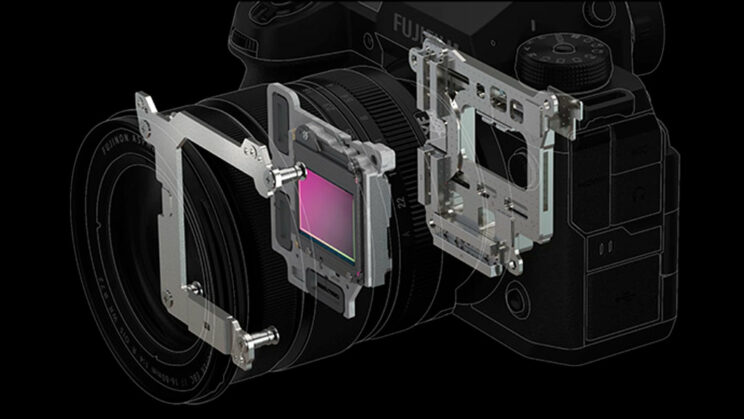
4. LCD Monitor and EVF
The Fujifilm X-T4 and Fujifilm X-T5 are both equipped with touchscreen LCDs that allow the user to preview their shots, as well as change various settings.
The X-T4 features a vari-angle 3.0″ 1.62m-dot LCD, while the X-T5 has a 1.84 million dot three-way tilting LCD screen of the same size.
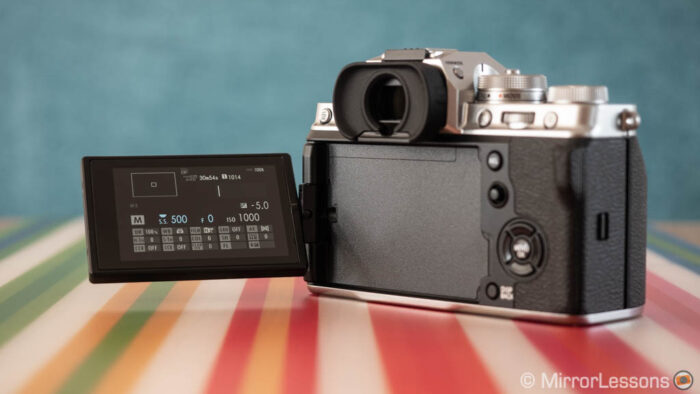
Both screens are beneficial for shooting in difficult positions or at waist level, allowing the photographer or videographer to see their composition from various angles.
However, the X-T5’s three-way solution lacks the possibility of positioning the monitor to a 180˚ position for self-filming. In fact, Fujifilm has reverted back to the same 3-way tilting design introduced on the X-T3, a hint that the fifth model is aimed at photographers more than video-makers.
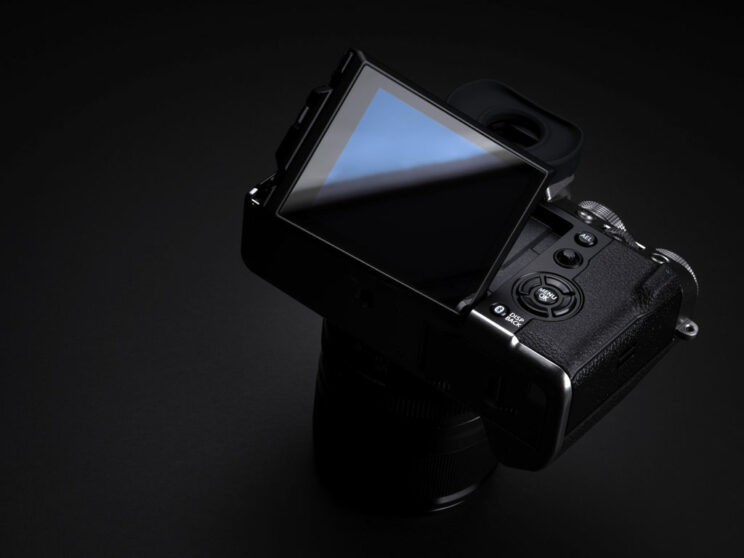
Another notable feature of these cameras is their electronic viewfinders. Both models are equipped with high magnification EVFs; however, the X-T4’s EVF has 0.75x magnification while the X-T5’s has 0.8x. The latter offers better suppression of parallax and distortion than its predecessor.
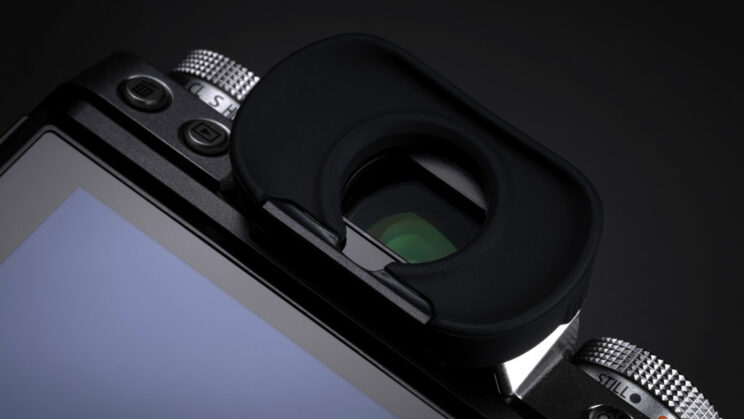
Fujifilm also said that the eye sensor (that allows you to switch automatically between LCD and EVF) is more responsive on the new camera.
EVF
X-T4
X-T5
Panel
0.5-in OLED
0.5-in OLED
Resolution
3.69M dots
3.69M dots
Magnification
0.75x
0.8x
Eyepoint
23mm
24mm
Frame rate
100fps
100fps
5. Autofocus
The autofocus on the X-T5 has been improved from the previous model with the addition of Deep Learning technology. Although both models use a hybrid system (phase and contrast detection), the autofocus on the X-T5 includes advanced algortihms to detect animals, birds, cars, motorcycles, aeroplanes and trains. On the X-T4, the camera can only detect faces and eyes of human beings.
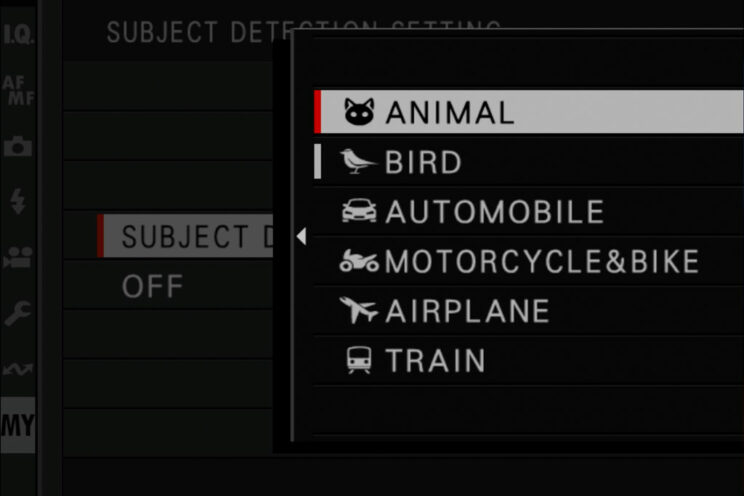
Fujifilm says that the greater number of phase detection pixels used on the X-T5 sensor allows the camera to be more accurate and stable in terms of its performance.
To note that both cameras are rated with a fast AF acquisition speed of 0.02s, and that the low light performance is also the same: -7EV (measured with the 50mm F1.0).
6. Film Simulations and Smoothing Skin
The two cameras come with various film simulation modes (18 on the X-T4, 19 on the X-T5), each designed to mimic the look of a different type of film.
The X-T5 has an additional film simulation mode, “Nostalgic Neg,” which is characterised by high saturation and soft tonality. This mode is ideal for creating nostalgic or romantic images, whether you’re looking to capture the beauty of a sunset or the intimate moments of a wedding. See an example below taken with the X-H2S.
The Fujifilm X-T4 does not feature the Smooth Skin Effect that is present in the newer X-T5 model. As the name suggests, this feature automatically smooths the skin tone, and works on the straight-out-of-camera JPGs. You can set two level (weak or strong).
7. White Balance
The Fujifilm X-T4 and newer Fujifilm X-T5 both feature Auto White Balance (AWB) modes, which is certainly nothing new on a digital camera.
However, the X-T5 has something more to offer, thanks to the introduction of Deep Learning technology for AWB. It is able to more accurately recognise the colour of warm light in comparison to the standard AWB mode.

8. Body, Connection and Battery
The Fujifilm X-T4 and newer Fujifilm X-T5 are similar in many ways. Both feature the same three-dial layout to control shutter speed, ISO and exposure compensation. They also have a dedicated switch to go into video or photo mode.
The X-T5 is lighter than the X-T4, and is also a bit smaller, especially looking at the width side.
- X-T4: 134.6 x 92.8 x 63.8mm, 607g
- X-T5: 129.5 x 91 x 63.8mm, 557g
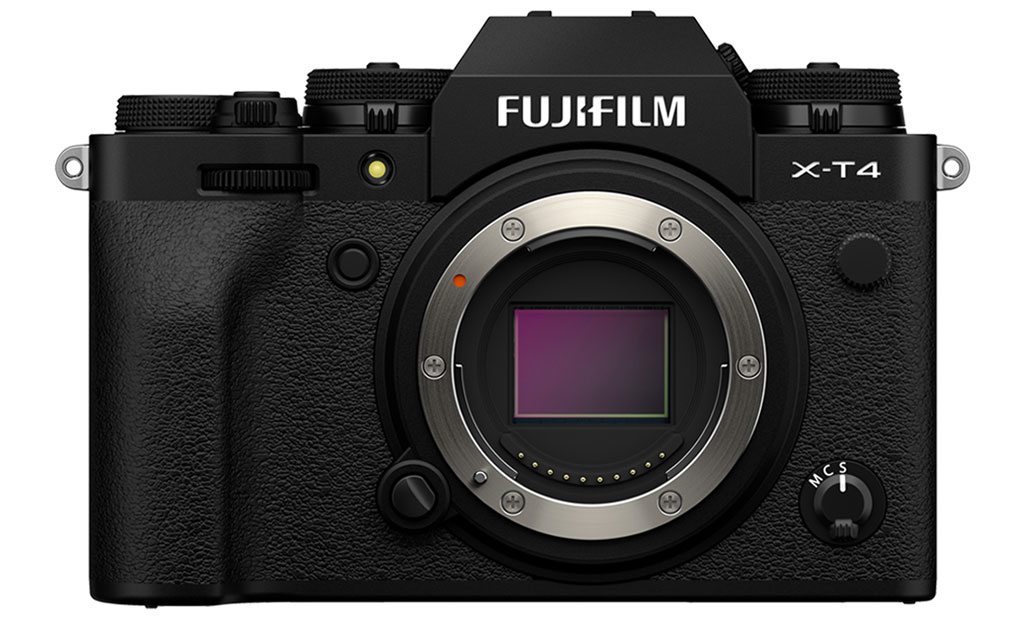
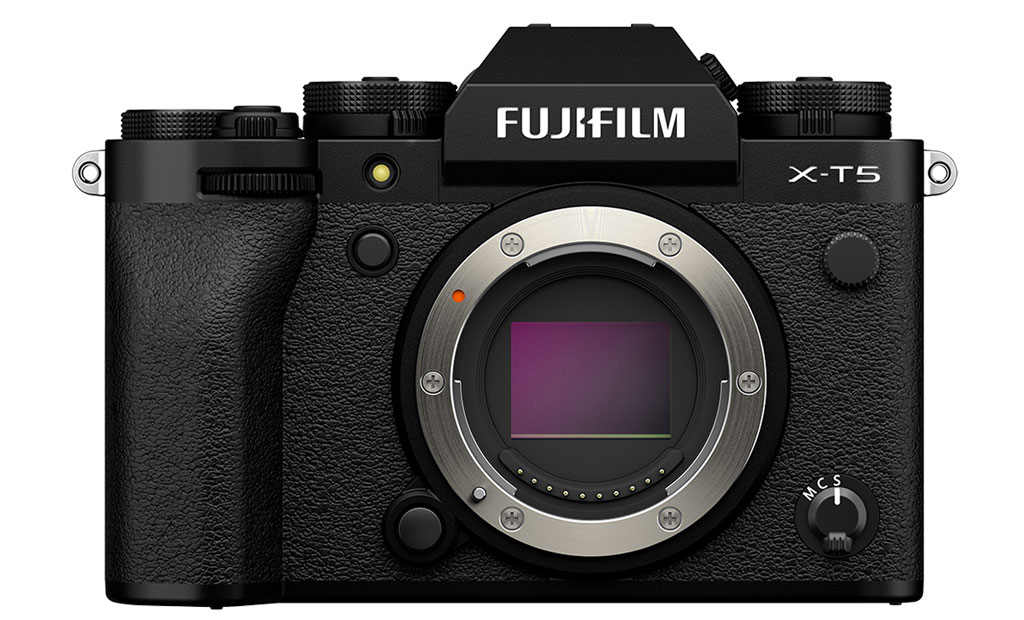
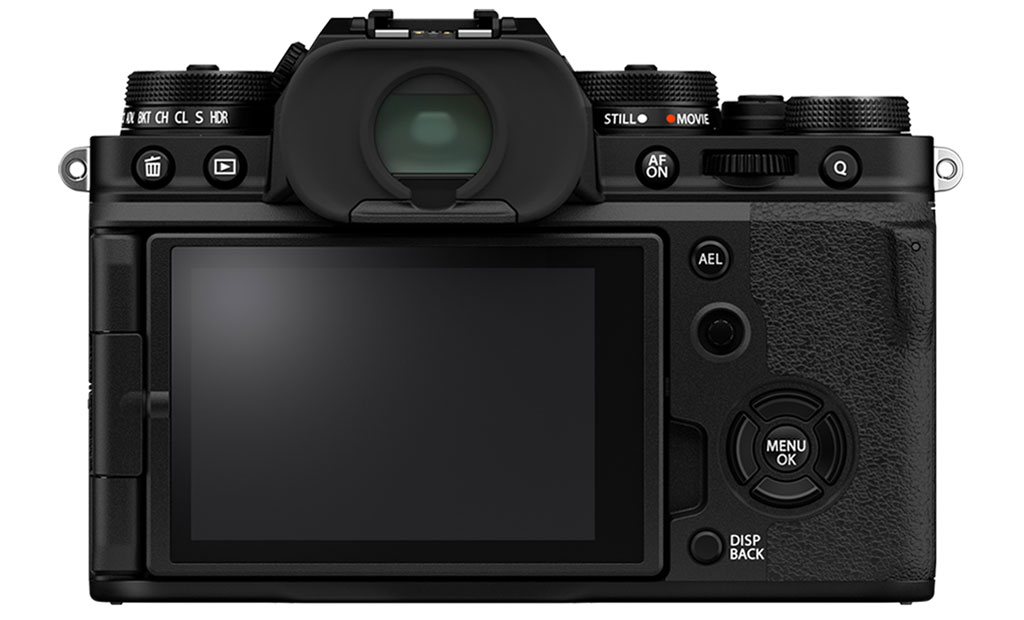

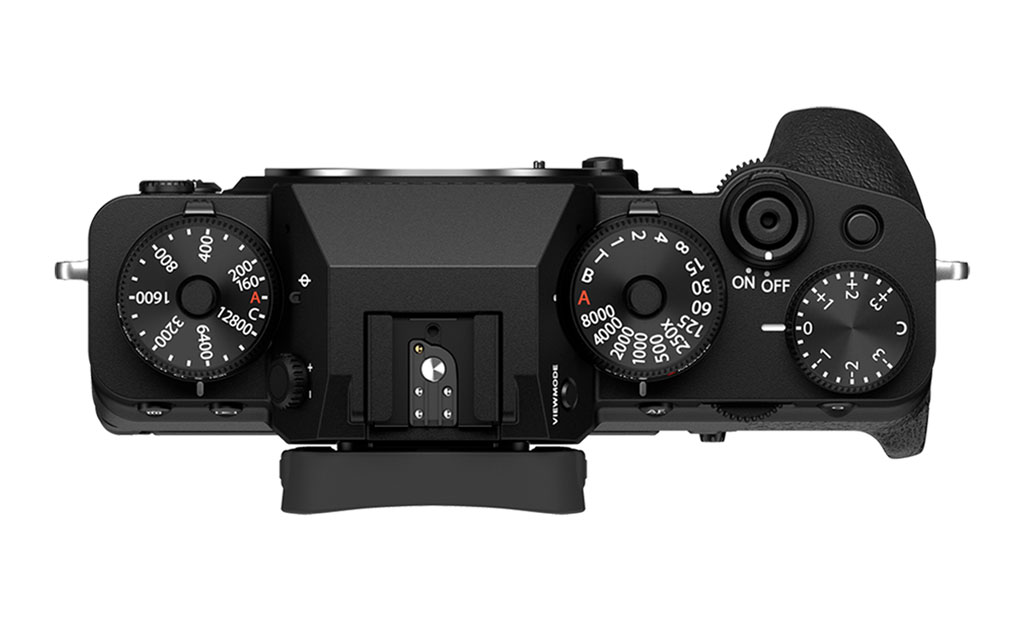
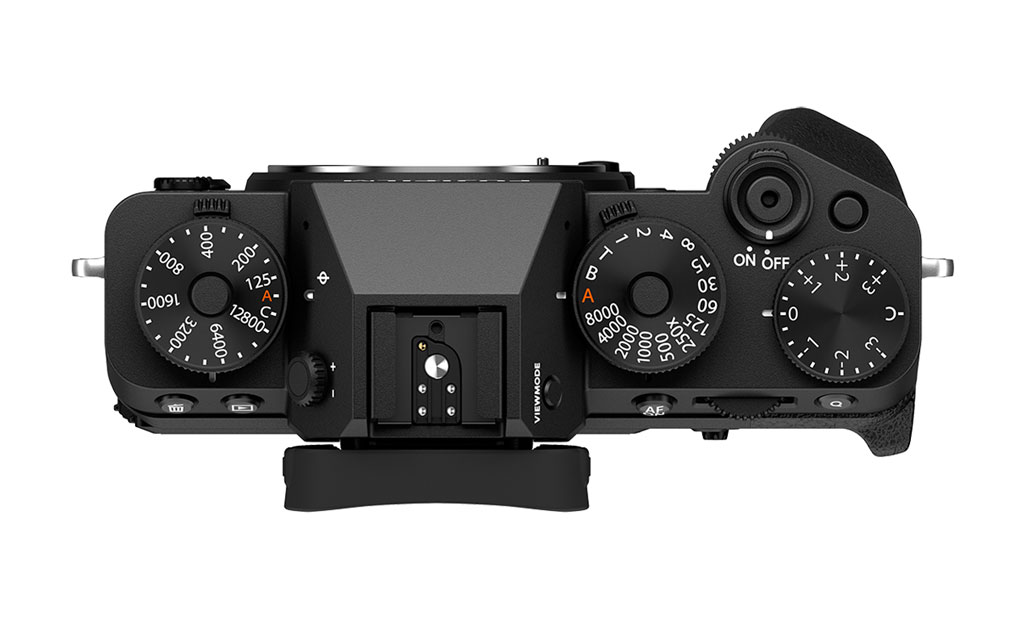
Both cameras have the same inputs and outputs:
- microphone mini jack
- micro HDMI port
- flash sync socket
- 2.5mm remote jack
- dual SD UHS-II compatible memory card slots
One upgrade on the X-T5 is a 10Gbps USB C port, versus 5Gbps USB C on the previous model.
Note that neither offers a headphone output, but Fujifilm includes a USB C to female jack adapter in the box.
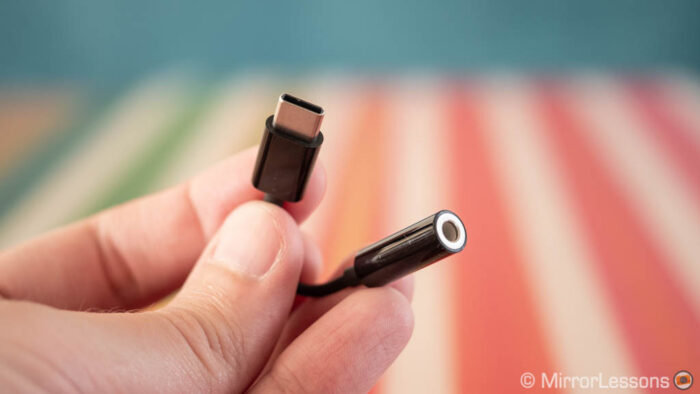
In terms of the battery, the X-T5 is less power-hungry than the X-T4. In economy mode, the newer camera can capture up to 740 photos, whereas the same Fujifilm NP-W235 battery in the X-T4 contributed 600 photos from a single charge.
9. Video
We kept one of the most important upgrades for last.
The X-T4 proved to be a very capable video camera, offering 4K up to 60p (with a small 1.18x crop), as well as 10-bit 4:2:0 internal recording.
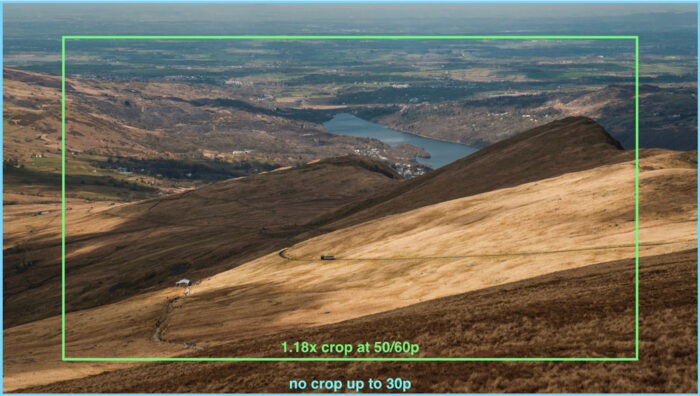
But technology evolves fast, right? Fujifilm’s philosophy is no different, and the X-T5 can record 6.2K movies up to 30p. It can also record 10-bit 4:2:2 internally, another upgrade over the X-T4 in terms of colour sampling.
There is a catch however: the 6.2K mode, as well as 4K 30p at the highest quality come with a 1.23x crop on the sensor. You can record 4K up to 60p with the full width of the sensor, but the quality is lower because the camera does line-skipping rather than oversampling, meaning it doesn’t use all the information (pixels) from the sensor.
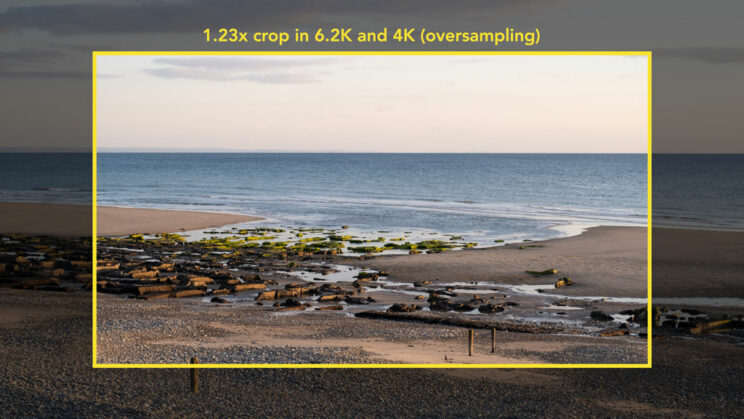
Another improvement is the removal of the limit-per-clip recording time. According to Fujifilm, the new camera can record 6.2K footage for up to 90 minutes (around 25˚C).
The X-T4 includes HLG and F-Log gamma curves, which are also available on the X-T5 but with one extra option, F-Log2, which is supposed to give more dynamic range (13+ instead of 12EV). I’m saying “supposed to” because our test with the X-H2S didn’t show a big difference in a real world use.
Additionally, when combined with an Atomos External Recorder, the X-T5 can also output 12-bit Apple ProRes RAW up to 6.2K and 29.97fps. For even more versatility, the X-T5 can also be used with the Blackmagic Design Video Assist 12Gs to record Blackmagic RAW footage with the same resolution and frame rate.
X-T4
X-T5
6.2K 30p
–
1.23x crop
(oversampling)
4K 60p
1.18x crop
(oversampling)
no crop
(line-skipping)
4K 30p
no crop
(oversampling)
no crop
(line-skipping)
1.23x crop
(oversampling)
Bit depth (int.)
10-bit 4:2:0
10-bit 4:2:2
HDMI
10-bit 4:2:2
Prores RAW
Gamma
HLG
F-Log
HLG
F-Log
F-Log2
10. Price
The X-T5 has been launched at the price of $1700 / £1700 €2000 for the body only.
The X-T4 can be found for the same USD price, but less in Europe (£1550 / €1800). I suspect street prices, as well as special offers will lower the cost of the X-T4 over the next period.
Conclusion
The Fujifilm X-T5 is a tempting offering because it packs the brand new 40MP sensor (a record for APS-C concerning resolution) but costs less than the flagship X-H2. For those of you who seek the ultimate image quality in the X-series line-up without breaking the bank, the new camera seems to be the right choice, even more if we consider that Fuji has tailored it for photographers especially, rather than trying to create the perfect hybrid (that is what the X-H2 line-up is for now).
Given the small difference in price, one might be tempted to go for the X-T5, but what if we’re talking about an upgrade? Is it worth trading the X-T4 for the new model?
I think the development in autofocus and auto white balance, in addition to image quality, can also be interesting to look at. Other features like the high resolution mode as well as the improved viewfinder can be added to the ‘pro’ arguments. That said, if you also use your X-T4 for video, perhaps the reasons to upgrade are less convincing: yes, you get 6.2K, but also a bigger sensor crop and I suspect more noise at high ISOs.
Reminder: the links below are affiliate links. If you decided to buy something after clicking the link, we will receive a small commission.
Check price of the Fujifilm X-T4 on
Amazon | Amazon UK | B&H Photo | eBay
Check price of the Fujifilm X-T5 on
B&H Photo


